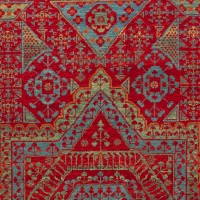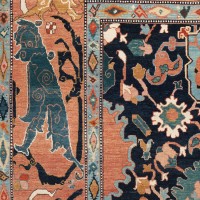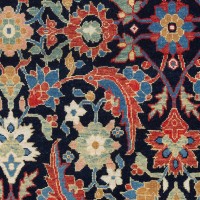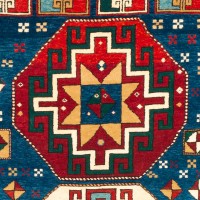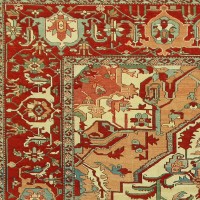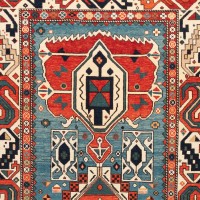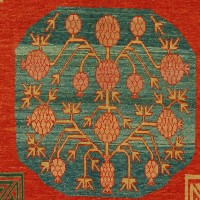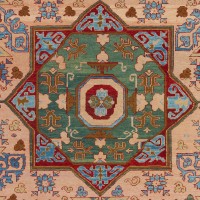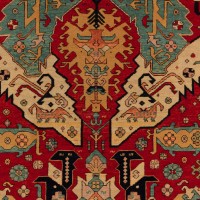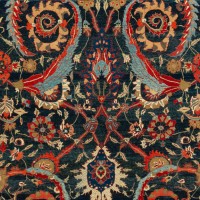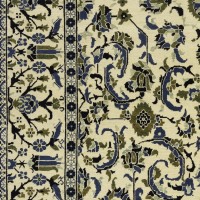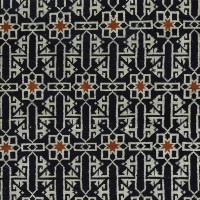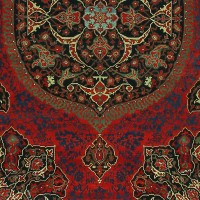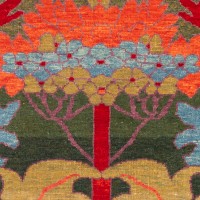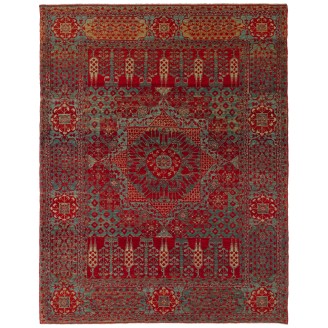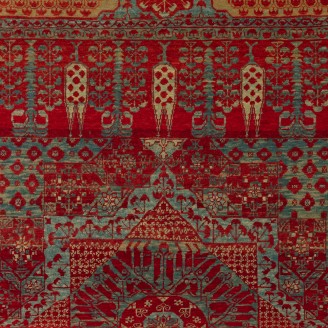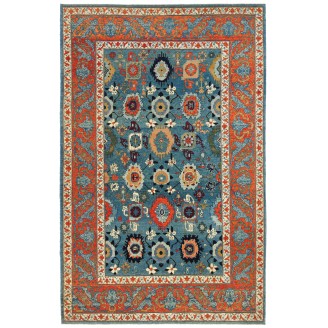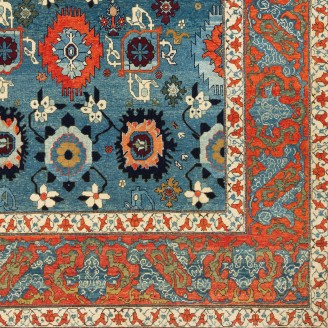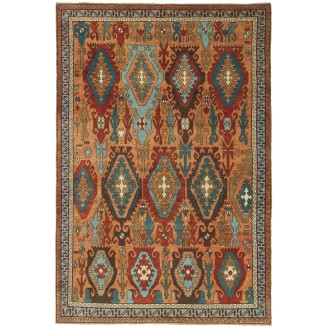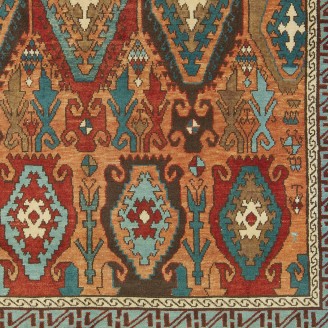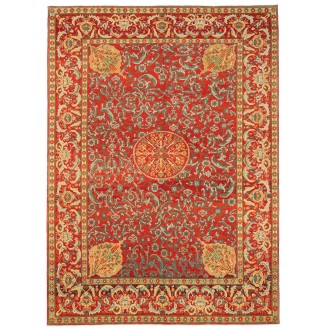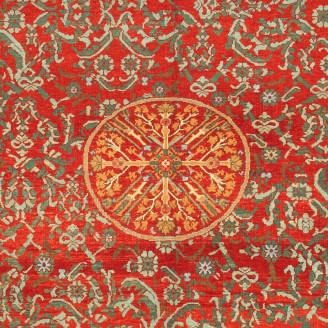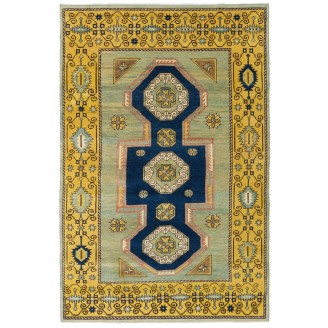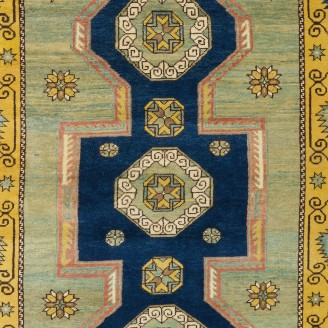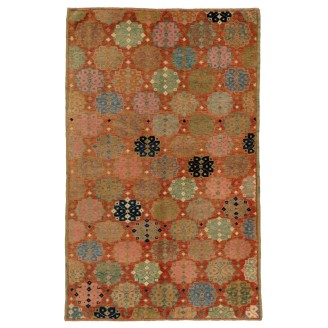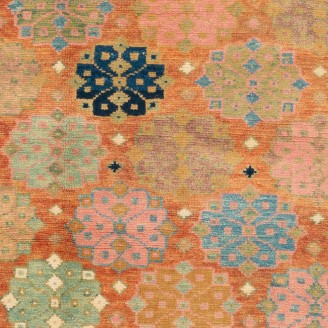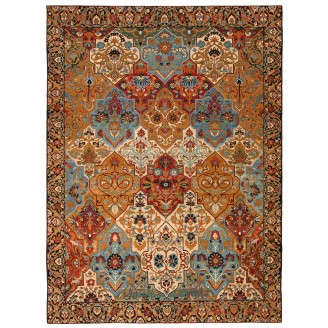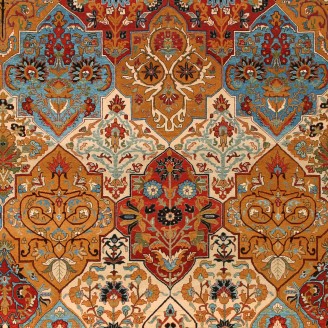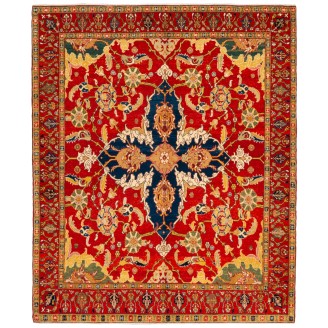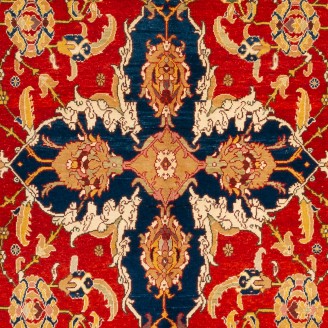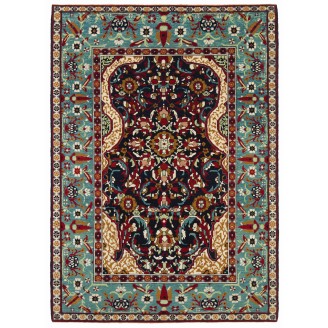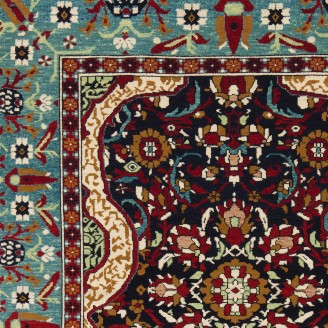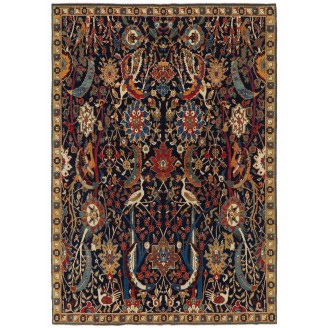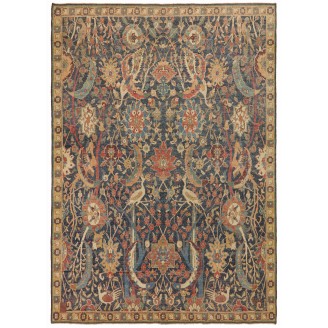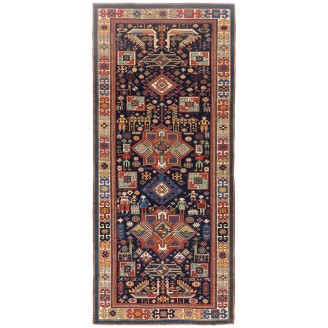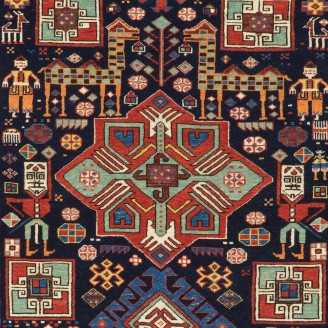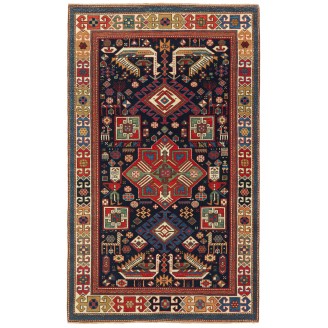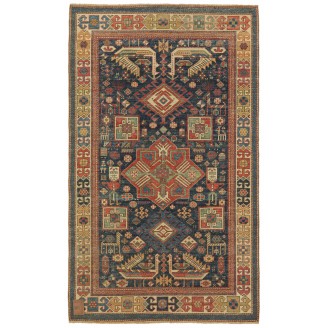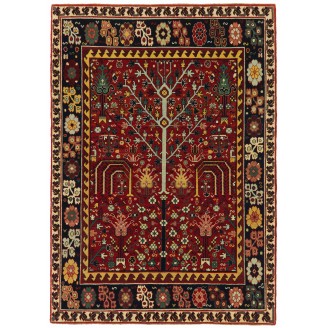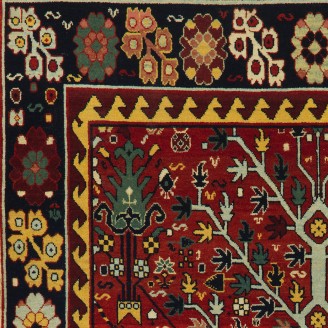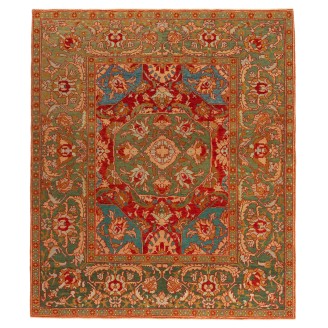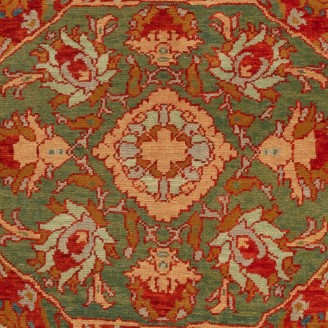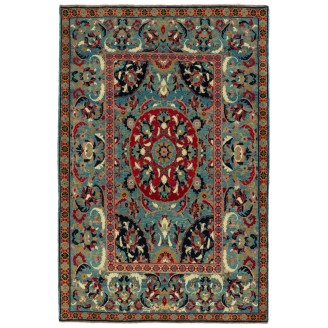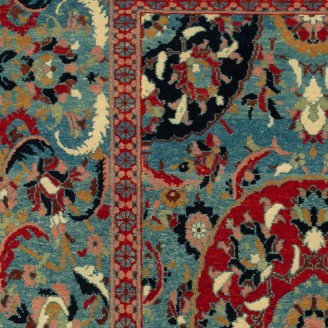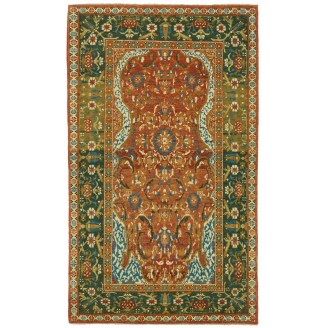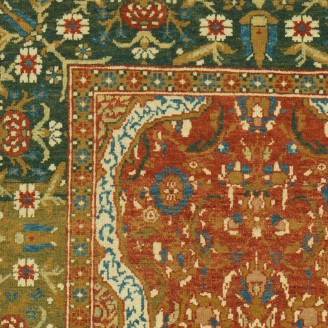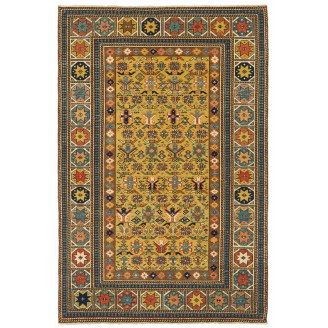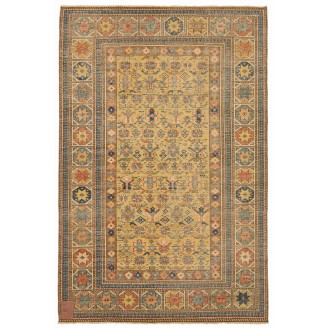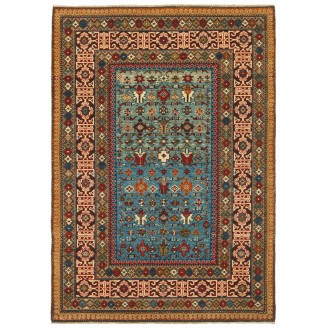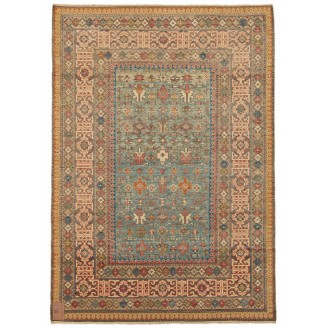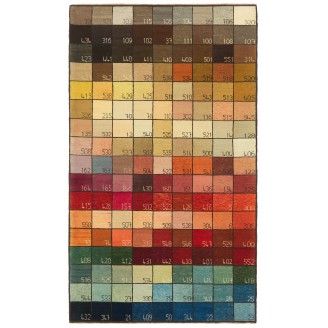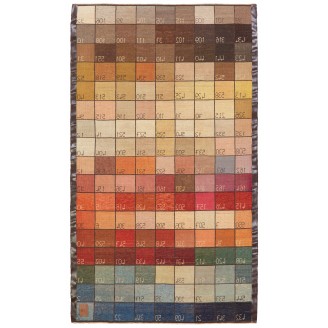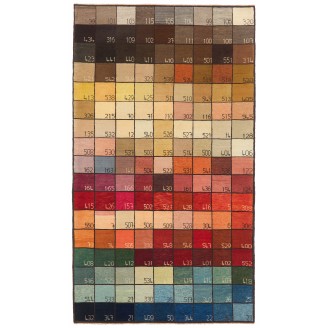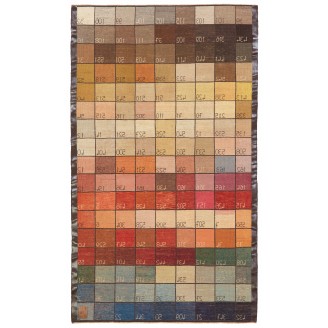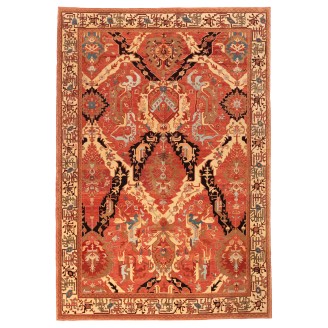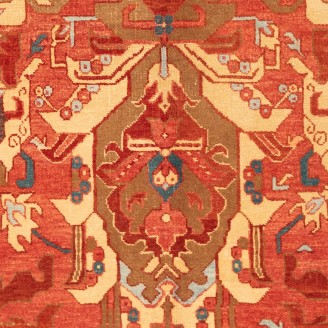Model: ART00574
Dimensions: 5'1" X 6'5"(155cm x 197cm)
The source of the rug comes from the book Renaissance of Islam, Art of the Mamluks, Esin Atil, Smithsonian Institution Press, Washington D.C., 1981 nr.126. This rug with palm trees and cypresses was designed in the late 15th-century rug by Mamluk Sultane of Cairo, Egypt. It is exhibited at the Washi..
Price:
$6,200
Ex Tax:$6,200
Model: ART00511
Dimensions: 6'7" X 10'2"(202cm x 310cm)
This offset pattern is composed of palmettes and flowers, one has the impression that it is only part of a larger scheme designed 19th-century rug from Bidjar region, Eastern Kurdistan area. Very similar palmettes, drawn in a curvilinear manner and combined with identical forked leaves, can be seen ..
Price:
$12,000
Ex Tax:$12,000
Model: ART00367
Dimensions: 4'11" X 7'4"(151cm x 225cm)
The source of the rug comes from the book Orient Star – A Carpet Collection, E. Heinrich Kirchheim, Hali Publications Ltd, 1993 nr.214. This is a series of medallions designed rug from the 17th century, Şarkışla (Sarkisla, Sharkishla or Sharkisla) region, Sivas, Central Anatolia area, Turkey. This r..
Price:
$3,900
Ex Tax:$3,900
Model: ART00052
Dimensions: 6'2" X 8'6"(190cm x 260cm)
Turkish Court Manufactury Rugs were woven in the Egyptian workshops founded by Ottoman Empire in the 16th century. Those carpets were woven in Egypt, following the paper cartoons probably created in Istanbul and sent to Cairo at that time.The source of carpet comes from the book Seven Hundred of Ori..
Price:
$9,850
Ex Tax:$9,850
Model: ART00387
Dimensions: 5'1" X 7'8"(155cm x 235cm)
The source of carpet comes from the book Orient Star - A Carpet Collection, E. Heinrich Kirchheim, Hali Publications Ltd, 1993 nr.159. The field drawing is gardens with a pond designed 16th-century rug from Konya, Central Anatolia area, Turkey. It's the so-called 'Bellini Carpet' due to the similari..
Price:
$3,600
Ex Tax:$3,600
Model: ART00325
Dimensions: 3'3" X 5'1"(100cm x 157cm)
The source of the rug comes from the book Orient Star - A Carpet Collection, E. Heinrich Kirchheim, Hali Publications Ltd, 1993 nr.173. This classical shape of a rosette design 16th-century rug from the Aksaray region, Central Anatolia area, Turkey. The arrangement of rosettes and the color combinat..
Price:
$1,900
Ex Tax:$1,900
Model: ART00243
Dimensions: 8'3" X 11'3"(252cm x 343cm)
This is an elegant multi-medallion carpet designed 17th century in the Kerman region, Persia. The carpet design shows vigorous rows of eight-pointed star medallions; ornamented with floral forms contrasting with a dark border. In the field, a rich assortment of decorative arranged small but vigorous..
Price:
$33,000
Ex Tax:$33,000
Model: ART00181
Dimensions: 5'7" X 6'7"(171cm x 203cm)
Turkish Court Manufactury Rugs were woven in the Egyptian workshops founded by Ottoman Empire in the 16th century. Those carpets were woven in Egypt, following the paper cartoons probably created in Istanbul and sent to Cairo then.The source of the carpet comes from the book Islamic Carpets, Joseph ..
Price:
$6,000
Ex Tax:$6,000
Model: ART00568
Dimensions: 4'8" X 6'6"(143cm x 200cm)
Turkish Court Manufactury Rugs were woven in the Egyptian workshops founded by Ottoman Empire in the 16th century. Those carpets were woven in Egypt, following the paper cartoons probably created in Istanbul and sent to Cairo at that time.The source of carpet comes from the book by Dimand, Maurice S..
Price:
$6,220
Ex Tax:$6,220
Model: ART00675
Dimensions: 9'9" X 6'10"(298cm x 210cm)
Kerman Vase-Technique Carpet (Model: ART00675) – A Masterful Revival of 17th Century Persian WeavingThe Kirman Vase Rug (Model: ART00675) by Ararat Rugs is a meticulous revival of the legendary Safavid-era Kirman "Vase" carpets, which were originally woven in ..
Price:
$25,200
Ex Tax:$25,200
Model: ART00609
Dimensions: 3'10" X 8'9"(118cm x 268cm)
The design source of the rug comes from a private collection sold at a European auction. This rug is from the late 19th century, Kazak region, Caucasus area. The Akstafa design reminds the basic principles of Star Kazaks, with the birds flanking the stars in the cartouche positions, their ..
Price:
$10,890
Ex Tax:$10,890
Model: ART00744
Dimensions: 3'8" X 6'0"(112cm x 184cm)
Origin and Inspiration:This stunning revival Akstafa Kazak Rug is a modern creation deeply rooted in the rich weaving traditions of the Caucasus, specifically inspired by the antique rugs of the Akstafa region. Located in present-day Azerbaijan, the Akstafa region was historically ren..
Price:
$4,200
Ex Tax:$4,200
Model: ART00587
Dimensions: 7'1" X 5'0"(216cm x 153cm)
The source of the rug comes from the book Antique Rugs of Kurdistan A Historical Legacy of Woven Art, James D. Burns, 2002 nr.45. This is a popular design employed by the Kurds, called bid majnum (or Bid Majnun, weeping willow) 17th-century rug from Sa'uj Bulagh, Eastern Kurdistan are..
Price:
$6,600
Ex Tax:$6,600
Model: ART00089
Dimensions: 4'1" X 4'9"(126cm x 146cm)
Turkish Court Manufactury Rugs were woven in the Egyptian workshops founded by Ottoman Empire in the 16th century. Those carpets were woven in Egypt, following the paper cartoons probably created in Istanbul and sent to Cairo at that time.The source of carpet comes from the book Antique Rugs from th..
Price:
$3,650
Ex Tax:$3,650
Model: ART00566
Dimensions: 4'3" X 6'5"(132cm x 196cm)
Turkish Court Manufactury Rugs were woven in the Egyptian workshops founded by Ottoman Empire in the 16th century. Those carpets were woven in Egypt, following the paper cartoons probably created in Istanbul and sent to Cairo at that time.The source of carpet comes from the book Antique Rugs from th..
Price:
$4,280
Ex Tax:$4,280
Model: ART00541
Dimensions: 3'0" X 4'11"(92cm x 151cm)
Turkish Court Manufactury Rugs were woven in the Egyptian workshops founded by Ottoman Empire in the 16th century. Those carpets were woven in Egypt, following the paper cartoons probably created in Istanbul and sent to Cairo at that time.The source of carpet comes from the book by Dimand, Maurice S..
Price:
$2,220
Ex Tax:$2,220
Model: ART00720
Dimensions: 5'4" X 3'7"(164cm x 110cm)
The design source of the rug comes from the book Oriental Rugs Volume 1 Caucasian, Ian Bennett, Oriental Textile Press, Aberdeen 1993, nr.360. The alternating row of octagons and spiky stylized flowers are typical of a group called Khirdagyd-Chichi, from the late 19th century, Village of Chicli..
Price:
$3,420
Ex Tax:$3,420
Model: ART00719
Dimensions: 5'3" X 3'9"(161cm x 115cm)
The design source of the rug comes from the book Oriental Rugs Volume 1 Caucasian, Ian Bennett, Oriental Textile Press, Aberdeen 1993, nr.360. The alternating row of octagons and spiky stylized flowers are typical of a group called Khirdagyd-Chichi, from the late 19th century, Village of Chicli, Kub..
Price:
$3,530
Ex Tax:$3,530
Model: ART00745
Dimensions: 4'6" X 7'8"(139cm x 236cm)
Introducing the Color Chart Rug (Model: ART00745) from Ararat Rugs, a masterpiece that exemplifies the rich tradition of natural dyeing and expert craftsmanship. This rug is meticulously handwoven with a heavy, Bidjar-like density, ensuring exceptional durability and longevity.Materials an..
Price:
$8,500
Ex Tax:$8,500
Model: ART00746
Dimensions: 4'5" X 7'9"(137cm x 238cm)
Introducing the Color Chart Rug (Model: ART00746) from Ararat Rugs, a masterpiece that exemplifies the rich tradition of natural dyeing and expert craftsmanship. This rug is meticulously handwoven with a heavy, Bidjar-like density, ensuring exceptional durability and longevity.Materials an..
Price:
$8,500
Ex Tax:$8,500
Model: ARTK0011
Dimensions: 6'11" X 10'2"(213cm x 310cm)
The source of the rug comes from the book Caucasian Carpets, E. Gans-Reudin, Thames and Hudson, Switzerland 1986, pg.37. This luxurious and varied work is known as the Cassirer dragon rug' from the name of its previous owner. It is examined in great detail in May U. Beattie's The Thyssen-Bornemisza ..
Price:
$22,000
Ex Tax:$22,000
